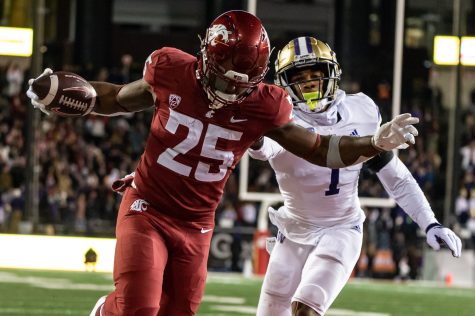Enforcing the enforcers
November 13, 2014
With daily stories emerging of unjust acts by civil authorities, it brings into question the role of police and law enforcement.
To cover the entire breadth of law enforcement and civil authorities in a single thread would be heinous to both the public and their enforcers.
Instead, I think it best to address a single concept that will lead to greater and further progress in the long term.
It is only of recent that I have become familiar with a shocking practice, a term referred to as asset forfeiture.
There are two forms of asset forfeiture: Civil and Criminal
Civil Asset Forfeiture: Defined by the FBI as an in rem action, meaning that the action is against the property, requires a simple burden of proof to merit acquisition.
Criminal Asset Forfeiture: an action against the person that, upon conviction, the punitive effect of forfeiture can be used against the convicted offender, must be judicial in addition to substantial legal proof.
The two differ in a multitude of ways. As laid out by the FBI they include the point of acquisition (seizure), the burden of proof required, the type of property and the discovery process of civil and criminal acts.
In such an important matter, it is crucial that various views reach the public.
The FBI claims that asset forfeiture “aims to undermine the economic infrastructure of the criminal enterprise” by “(removing) the tools, equipment, cash flow, profit, and, sometimes, the product itself, from the criminals and the criminal organization(s).”
The American Civil Liberties Union (ACLU), however, believes this to have an adverse effect.
“In many jurisdictions,” the ACLU claims, “the money can go to pay for salaries, advanced equipment and other perks.”
Moreover, “officers have a strong incentive to increase the seizures,” which amounts to “racial profiling and disproportionately impact(s) low-income African-American or Hispanic people.”
In a New York Times article by Shaila Dewan, Harry S. Connelly Jr., the city attorney of Las Cruces, New Mexico referred to seized cash and nice cars as “little goodies” that aid local law enforcement.
Connelly goes on to tell a story about a group of undercover cops who wrongly arrest a drunk driver with a 2008 Mercedes Benz because they “can hardly wait.”
Hostile, comprehensive criminal groups should be stopped at all cost, but the material of the public to provide for civil authorities is an entirely different story.
It is completely egregious to supplement enforcement budget through the unfair seizure of material goods.
The Department of Justice (DOJ) claims that the asset forfeiture program is designed in a manner that enhances public safety and security.
An audit for the Assets Forfeiture Fund clearly states that asset forfeiture focusses on depriving drug traffickers, racketeers, and other criminal syndicates of their ill-gotten proceeds and instrumentalities of their trade.
Drunk driving, though a repulsive act does not sound like a large criminal syndicate, worthy of complete humiliation and total asset acquisition.
Furthermore, from the fiscal year of 2012 to 2013, financial acquisition increased 7 percent, from $5,970.3 million to $6,388.0 million. Although the percentage of increase is not incrementally growing, it is still rising nonetheless.
Increases in monetary gain equates to more acquisition and to greater asset forfeiture at the expense of the people.
The nullification of criminal organizations relies heavy on the seizure of assets and the removal of material gain, this much is true; however, the benefit of seizing public assets for the monetary gain of law enforcement is an unjust and immoral practice that requires reexamination and reevaluation.





















